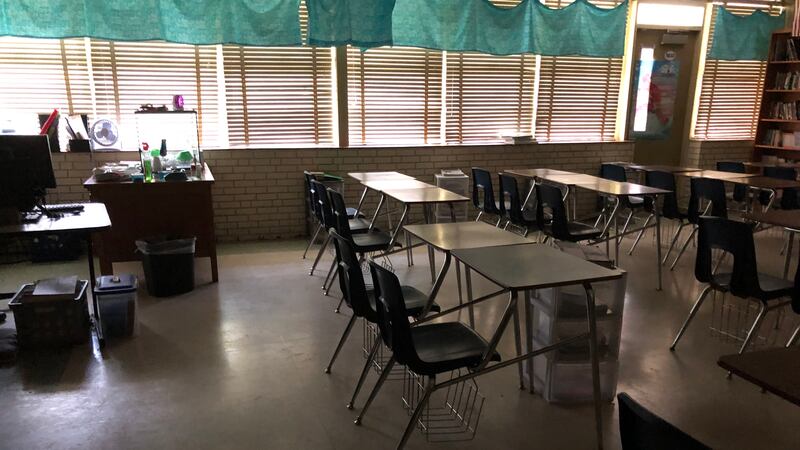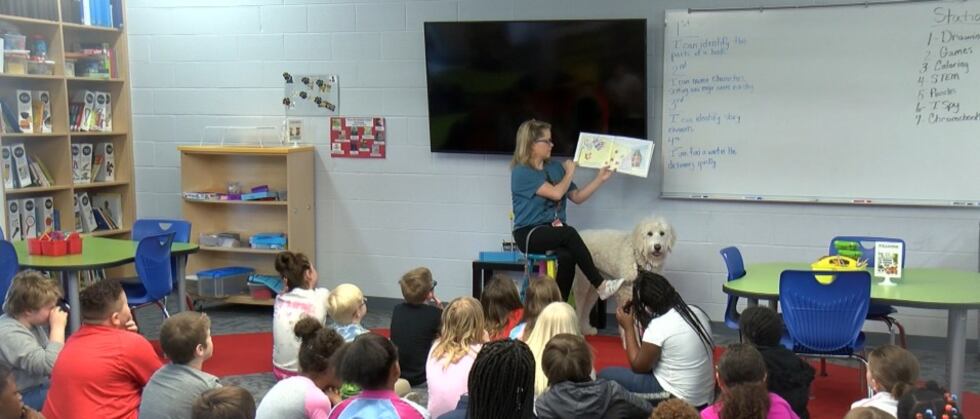Are working conditions, exclusion from certain state benefits driving South Carolina’s teacher shortage?

MYRTLE BEACH, S.C. (WMBF) - Governor Henry McMaster recently signed into law a bill expanding paid parental leave for state employees that does not include teachers. Why not? Because public school teachers aren’t technically employed by the state.
South Carolina public school teachers are part of the Department of Education, governed by the State Board of Education, get state retirement and benefits and their paychecks checks come from the state; however, according to the South Carolina Code of Laws, public school teachers are district employees - not state employees.
SECTION 59-1-130. “Teacher” defined: “Teacher” means any person who is employed either full-time or part-time by a school district either to teach or to supervise teaching.

That definition doesn’t apply to higher education teachers, though.
Academic personnel are defined by § 8-11-220 of the South Carolina Code of Laws as “presidents, provosts, vice presidents, deans, teaching and research staffs, and others of academic rank employed by the State educational institutions of higher learning, or medical institutions of education and research.” The compensation of employees in positions in the category of academic personnel is governed by Section 19-706.04 C. Presidents who are covered by the Agency Head Salary Commission are not subject to the Regulations pertaining to academic personnel.
Teachers are state employees but they are employed by districts.
With over 52,000 public school teachers, teachers would make up the largest group of those employed by the state by far, if they were categorized as such.
Even with the teacher shortage, teaching is the 19th most common profession in the state.
In order to teach in South Carolina, candidates must complete a teacher education program from an accredited college or university approved by the state board of education, complete a student teaching internship, hold a minimum of a bachelor’s degree, and provide a letter of recommendation for a teaching license from a teacher preparation program official. There are also many certifications that may be required.
A report published in January 2022 found there were more than 1,100 vacant teaching positions across the state.
RELATED | Report shows SC has more teacher vacancies now than at start of this school year
Like other southern states, South Carolina’s teacher turnover rates are higher than many other areas of the U.S.
The Center for Educator Recruitment, Retention, and Advancement (CERRA) 2017–2018 Supply and Demand Report shows a clear trend. Fewer candidates are graduating from South Carolina’s teacher education programs, while a growing number of teachers are leaving the classroom during/at the end of the first year, and during/within the first five years of teaching.
Even in the heart of the COVID pandemic, according to new research from the CERRA, teachers said they weren’t leaving because of the pandemic: they say they reached their breaking point.
RELATED | Report: South Carolina teachers see average salary drop
Teachers who left said between switching from teaching students in-person to virtual, helping kids learn and cope with the pandemic, providing tech , and feeling ignored by lawmakers or s when they asked for more resources, it became too much, CERRA’s report showed.
The unencumbered time law McMaster signed s the proposed teacher pay raises that should help with retaining teaching staff; however, McMaster clarified in March that not every teacher in the state would automatically receive a raise under the proposal, as some districts are already paying above the new proposed salary minimums.
My Executive Budget raises the minimum salary for a starting teacher from $36,000 to $38,000. We have made progress in raising teacher pay. Just five years ago, the minimum salary for a brand-new teacher was $30,113. pic.twitter.com/fc6CZnPAxB
— Gov. Henry McMaster (@henrymcmaster) January 20, 2022
While both the House and Senate have put more money toward schools and raises for some teachers in the respective versions of the budget they have approved, the House raises the statewide minimum salaries at each cell on the teacher pay schedule by $4,000, including increasing the starting minimum salary from $36,000 to $40,000.
State legislators also recently added an additional $50 million for public education after some districts said they would need more funding to pay for the mandated raises.
RELATED | Horry County School Board weighs proposed budget, pay raise for teachers, bus drivers
In March, The South Carolina Department of Education received more than $2 million in federal Elementary and Secondary School Emergency Relief funding for projects to combat the state’s teacher shortage.
“There’s so much more that must be done to address the teacher shortage,” Patrick Kelly of the Palmetto State Teachers Association said.
Kelly said working conditions are driving the teacher shortage. The new law gives teachers a half-hour break with no assigned duties or responsibilities each day for all elementary and special education teachers.
That new law simply guarantees regulations ed almost 40 years ago, SECTION 59-5-63. Duty-free lunch periods for teachers, 1984 Act No. 280, Section 1.
Duty-free lunch periods for teachers states:
The State Board of Education shall promulgate regulations directing the principal of each elementary school having grades one through six to develop and implement a plan which shall equitably apportion lunchroom duty among the teachers so that each teacher has as many duty free lunch periods as may be reasonable in order to ensure the safety and welfare of students and staff. The implementation of the plan shall not impose additional costs on the school districts. The regulations shall direct that the plan be in effect for the 1984-85 school year.
In mid-May, House moved to create a statewide task force to hold hearings and figure out how to recruit and retain more teachers in South Carolina.
Copyright 2022 WMBF. All rights reserved.














